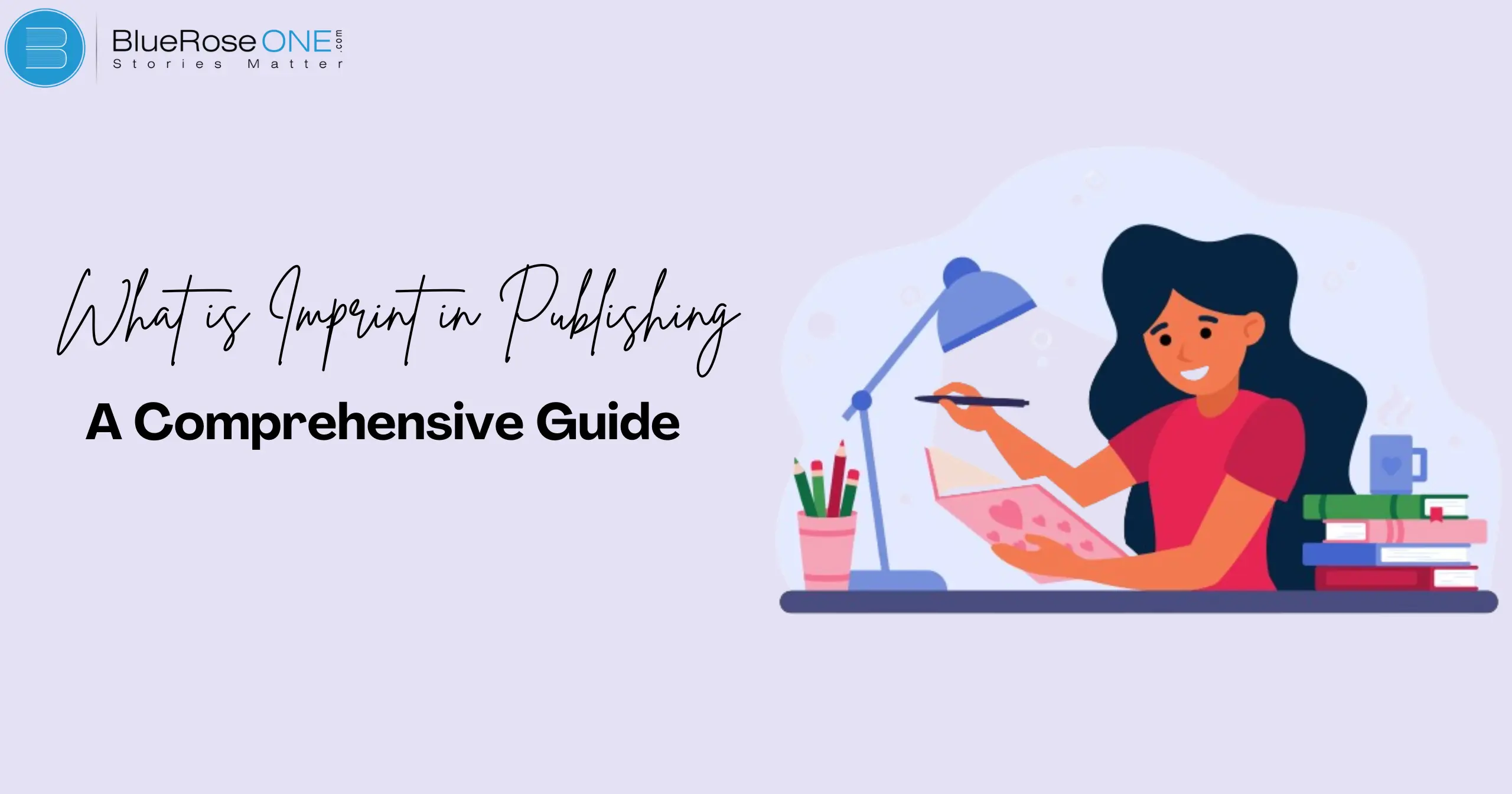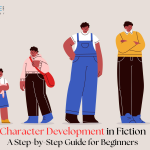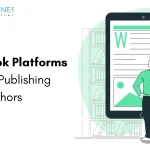The phrase “imprint” is frequently used in the publishing industry, but what does it really mean? Understanding imprints is essential whether you’re an experienced writer, an aspiring writer, or someone who is just interested in the publishing business.
This in-depth manual will explore the idea of imprints, their function in the publishing sector, and the ways in which they may affect your writing career.
What is an Imprint?
In the publishing industry, an imprint is a particular brand or branch that falls within a bigger publishing corporation. By concentrating on a specific genre or readership, each imprint enhances the efficiency of book marketing.
For instance, whilst one imprint focuses on mystery novels, another can specialize in children’s books. This enables publishers to customize their marketing approaches and broaden their product offerings.
Authors and readers can navigate the publishing business more skillfully if they have a better understanding of what an imprint is.
Historical Background of Imprints
The earliest days of printing are when the idea of imprints first emerged. They were originally used to denote the printer or publisher of a book. They changed over time to symbolize several divisions or areas of expertise within a publishing business.
You may also like: What is Novella? Structure, Length, and Key Elements
The Role of Imprints in Publishing
Purpose and Function
Within a publishing business, an imprint functions as a brand, aiding in the classification and promotion of publications to particular markets. Through imprints, publishers can establish robust identities and reputations by concentrating on specific genres or themes.
This area of expertise promotes trust and loyalty by making it easier for readers to recognise the kind of content they like. Being connected to a reputable imprint can help authors become more visible and credible in the cutthroat world of publishing.
How Imprints Influence Publishing Decisions
Because imprints make it easier for publishers to target particular audiences and genres, they are very important when making publishing decisions.
Because each imprint has a distinct brand and reputation, it is easier to market and place books in specific niches. This specialization increases the likelihood that a book will succeed by allowing publishers to accommodate a wide range of reader preferences.
BlueRose Publishers may make more strategic and intelligent decisions about publishing by utilizing the advantages of many imprints.
Types of Imprints
Major Publishing House Imprints
Large publishers like BlueRose Publishers, HarperCollins, and Simon & Schuster operate multiple imprints. Each imprint has its own editorial team, marketing strategies, and distinct brand identity.
Independent Publisher Imprints
Smaller divisions of independent publishing houses are known as independent publisher imprints. These imprints offer for more creative flexibility and experimentation because they frequently concentrate on niche genres or distinctive voices.
Independent imprints may be more adaptable in their author relationships and publication tactics than major publishers. They are a vital component of the varied publishing ecosystem since they give up-and-coming authors and unique stories a platform. Independent imprints contribute to the market’s rich diversity of books.
Digital and Self-Publishing Imprints
Authors and small publishers establish digital and self-publishing labels to independently disseminate their books, frequently via internet channels.
More control over the publishing process, including marketing, cover design, and editing, is possible with these imprints. Without the requirement for conventional publishing contracts, authors can publish their work immediately through self-publishing imprints and reach a worldwide audience.
Because of their accessibility and versatility, digital imprints are widely used in today’s publishing environment.
You may also read: What is Internal Conflict? Definition, Examples and Writing Tips
Benefits of Imprints for Authors
Niche Targeting and Market Specialization
An imprint is a term used to describe a publishing house’s speciality branch or division that concentrates on particular genres, themes, or target markets. For authors, imprints are essential for market specialization and niche targeting.
Authors can reach a specific audience interested in their genre or theme by connecting with an imprint. With this targeted strategy, authors can connect with their readership on a deeper level and build a devoted following that is eagerly awaiting their next release, all while increasing visibility and revenue potential.
Enhanced Brand Recognition
An imprint can greatly enhance an author’s brand recognition in the publishing industry. Authors can capitalize on reader trust and visibility by affiliating with a reputable label.
Increased sales and a wider readership can result from readers being more inclined to recognise and trust books published under that imprint, thanks to enhanced brand recognition.
This affiliation not only increases the author’s legitimacy but also helps them break into new markets and expose their writing to a larger audience.
Increased Marketing and Promotional Support
Increased marketing and promotional support is a significant benefit that authors gain through imprints in publishing. Imprints are specialized divisions of larger publishing houses that focus on specific genres or themes, allowing for targeted promotional strategies.
This support can include dedicated advertising campaigns, enhanced visibility in bookstores, and tailored outreach to relevant media outlets. By leveraging the imprint’s resources, authors can amplify their book’s exposure and reach their target audience more effectively, ultimately boosting sales and readership engagement.
How to Choose the Right Imprint for Your Book
Assessing Your Genre and Audience
The first step in choosing the best imprint for your book is to determine its category and target readership. Knowing your genre can assist you identify the publishing house that specializes in books comparable to yours, so you can make sure your work fits in with their publishing philosophy.
Finding your target audience the readers who will connect with your narrative the most is equally crucial. By taking this step, you can be sure that the imprint you select will have the marketing and distribution channels necessary to reach your target audience and maximize the impact and sales of your book.
Researching Imprint Reputations
In examining imprint reputations for your book, it’s critical to consider their experience and areas of expertise. The reputation of an imprint is a reflection of both how readers view its books and its publication history.
Check for imprints that have a history of publishing works with comparable themes or genres to yours. Examine reviews and sales information for their books to determine reader acceptance and market share.
Selecting an imprint that has a solid track record in the niche of your book can help it become more visible and credible in the publishing world, which will increase its chances of success.
Submitting to the Right Imprint
The proper imprint to submit your work to is essential to the success of your book. A publishing house’s specialized brand or division that concentrates on particular book genres or categories is referred to as an imprint.
Think about an imprint’s editorial focus, target market, and reputation before selecting one. Your chances of finding the perfect fit are increased when you look into imprints that complement the genre and style of your book.
This deliberate strategy guarantees that your book gets the attention and marketing that are appropriate for its subject and readership, in addition to increasing its visibility.
You may also read: Website for Writers: Showcasing your portfolio and building your brand
Imprints and the Changing Publishing Landscape
The Rise of Digital Imprints
The emergence of digital imprints has caused a significant change in the publishing landscape in recent years. These imprints serve digital-first initiatives and niche markets, mostly through their online operations.
Digital imprints, in contrast to traditional publishing organizations, frequently concentrate on e-books and audiobooks, using technology to quickly and effectively reach audiences around the world.
This strategy encourages creativity in book marketing and distribution in addition to expediting release dates. These imprints are essential to the way that the publishing landscape is changing in the modern era as digital consumption increases.
Impact of Self-Publishing on Traditional Imprints
The current state of publishing has seen a major impact on traditional imprints from self-publishing. These imprints, which are frequently connected to large publishing organizations, are up against independent writers who can now connect with readers directly by using services like Amazon Kindle Direct Publishing.
Because of this change, imprints now have to adjust by emphasizing carefully chosen releases, excellent editing, and aggressive promotion to set themselves apart from the wide range of independently released publications.
Traditional imprints continue to be influential despite these obstacles because of their well-established reputation, capacity to offer writers broad distribution networks, and editorial help.
Conclusion
In conclusion, it is critical for both ardent readers and prospective writers to comprehend what an imprint is and how it operates within the publishing industry. Because they offer authors greater assistance, market focus, and specialization, imprints are crucial in influencing the book publishing industry.
Selecting the appropriate imprint can have a big influence on your publishing career, regardless of whether you’re trying to publish your first book or branching out into other genres.
















